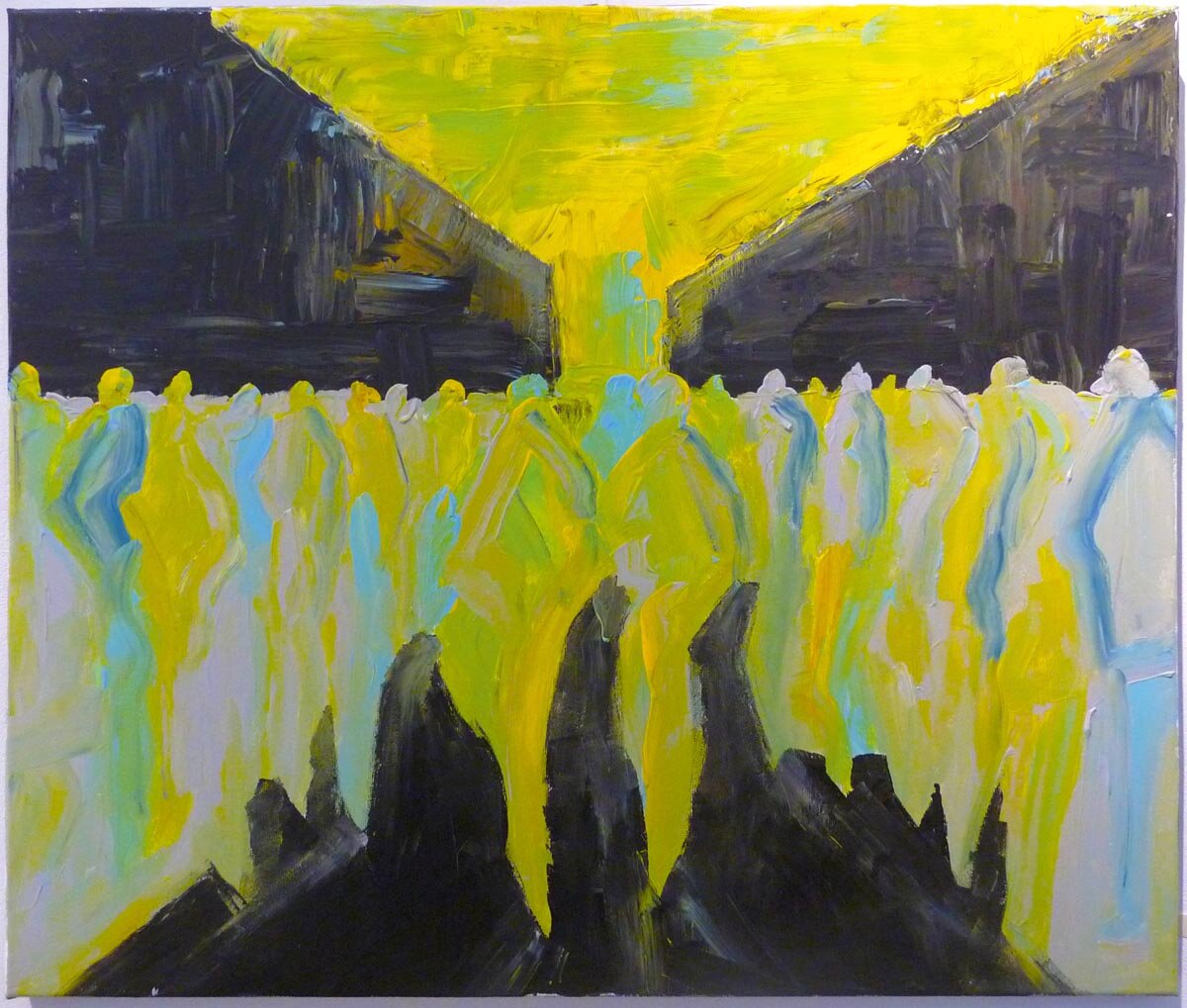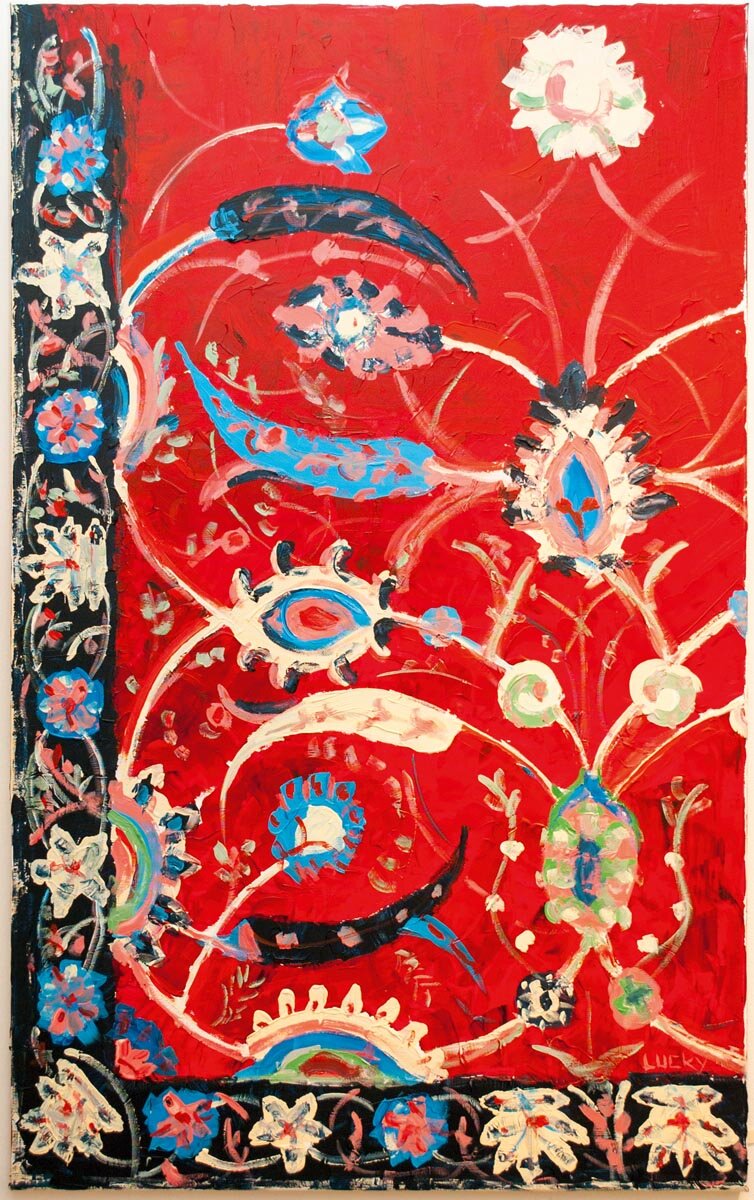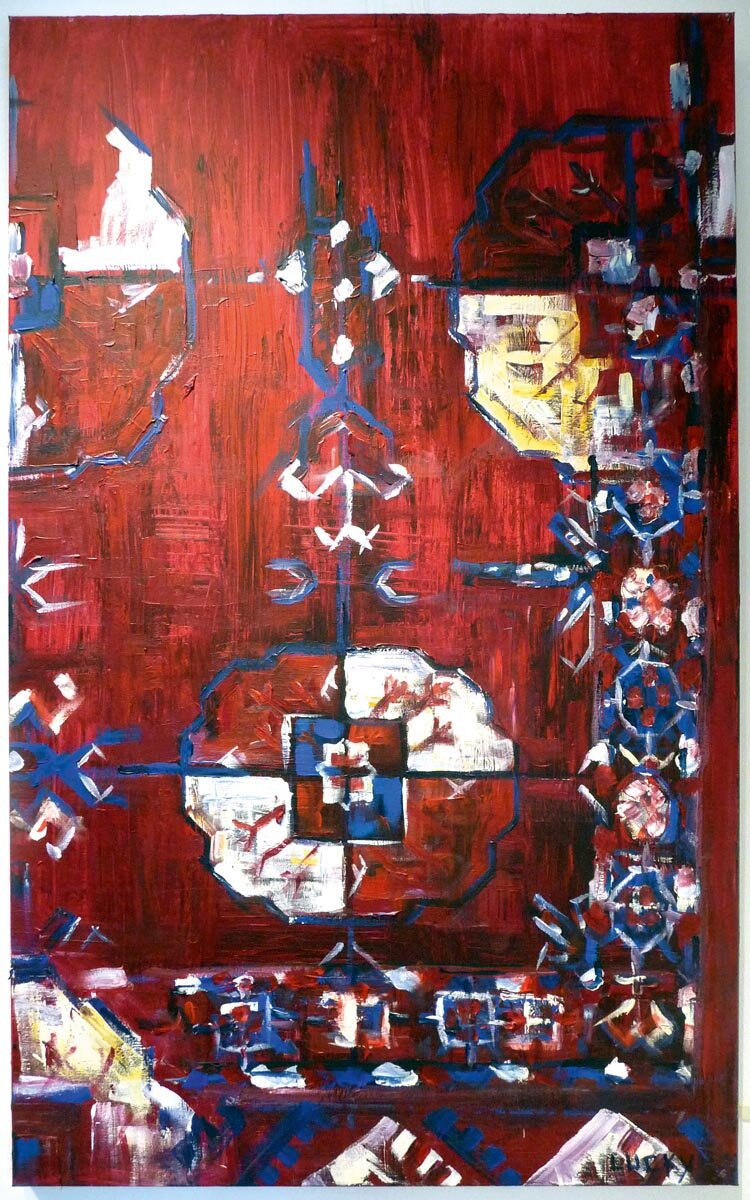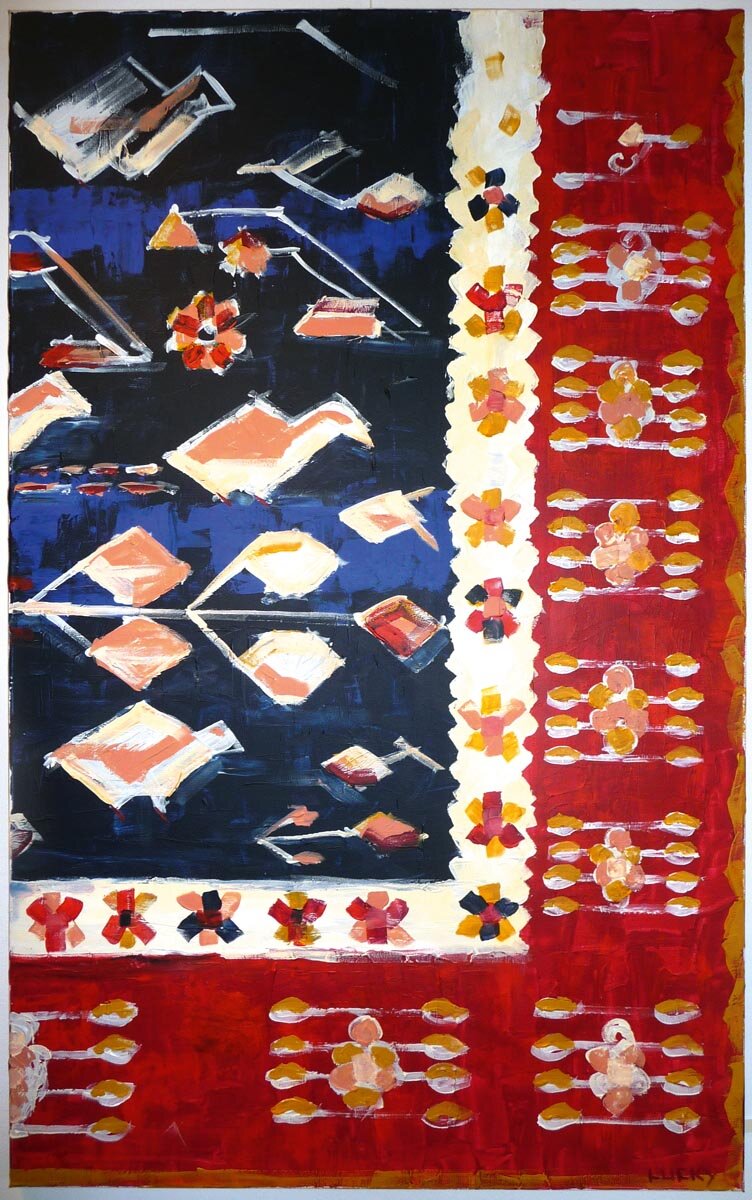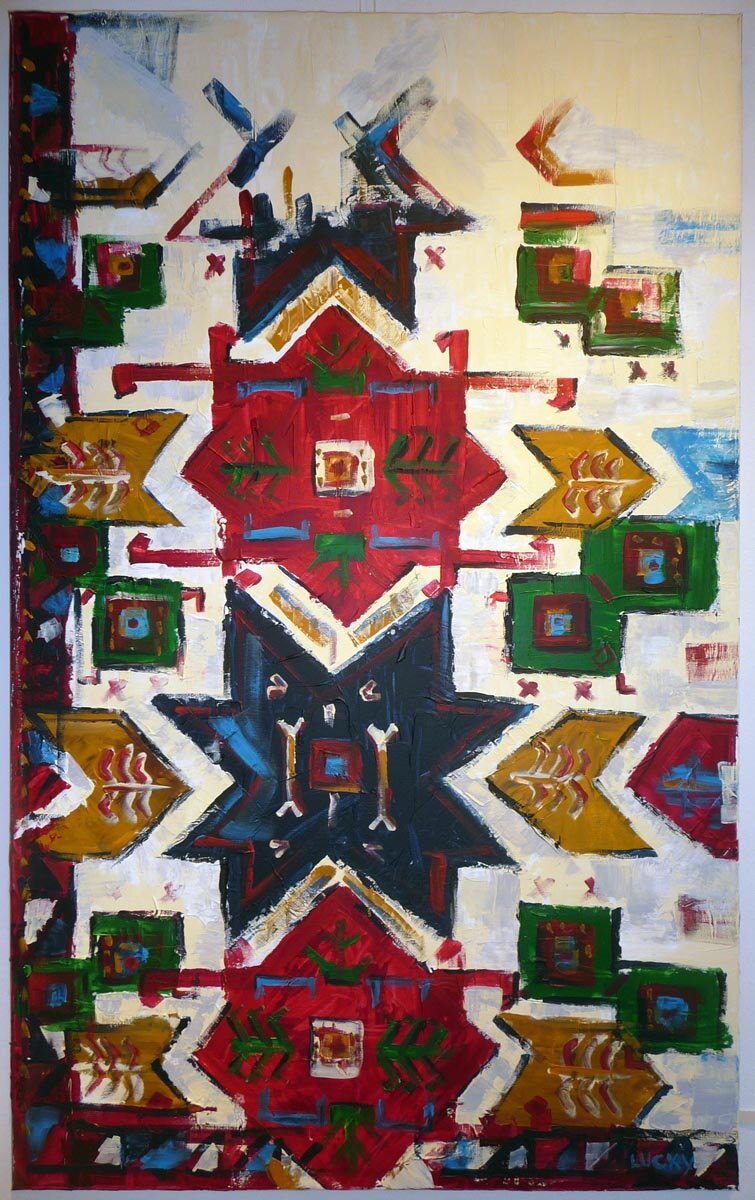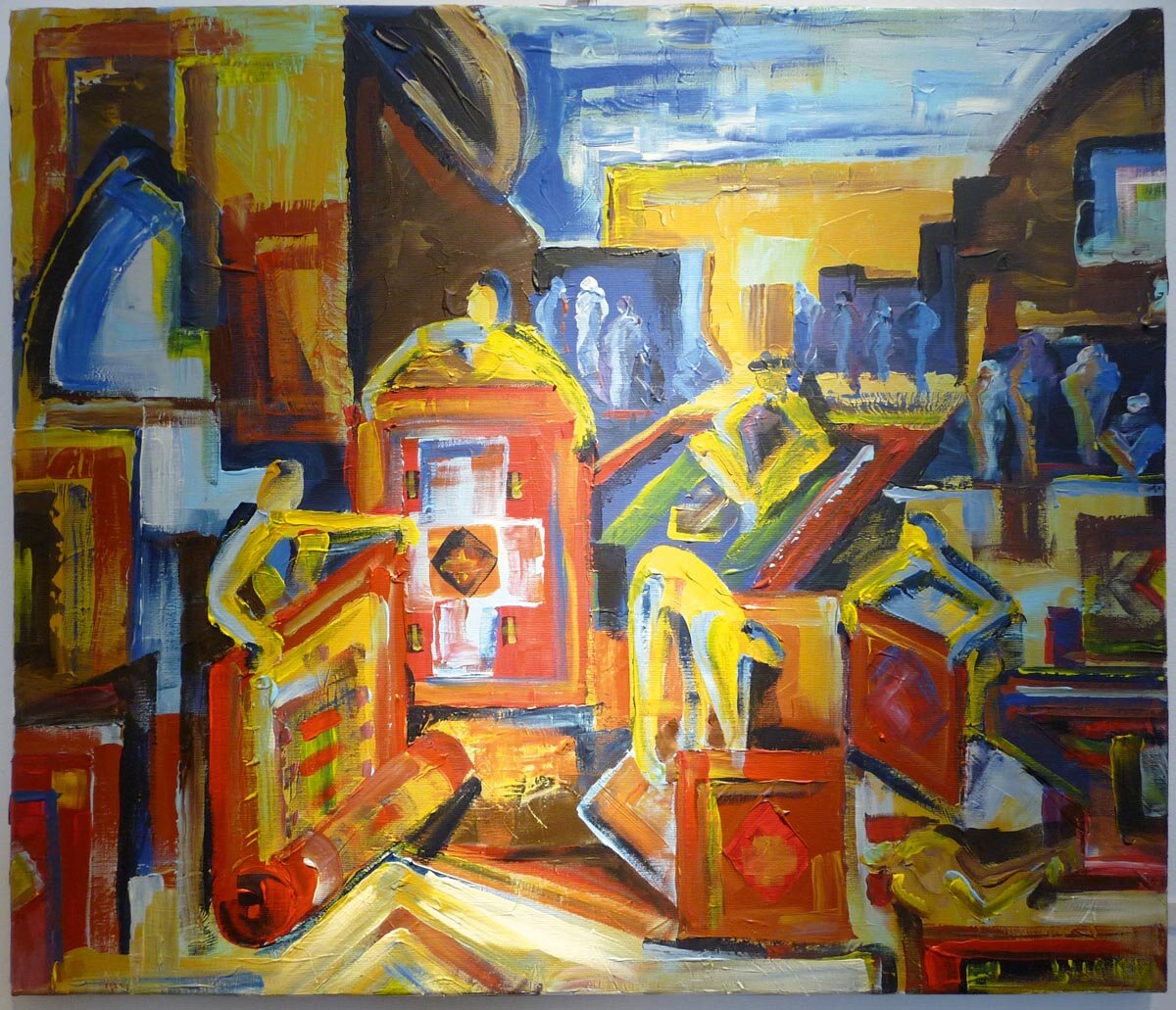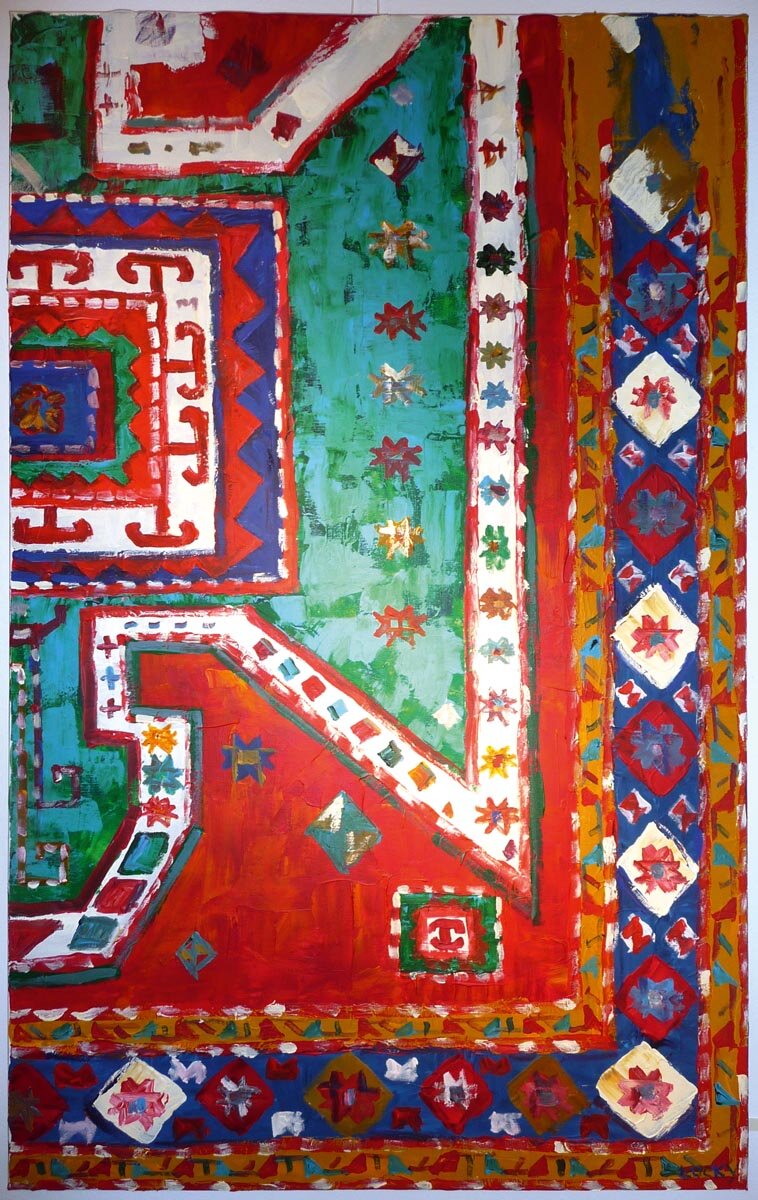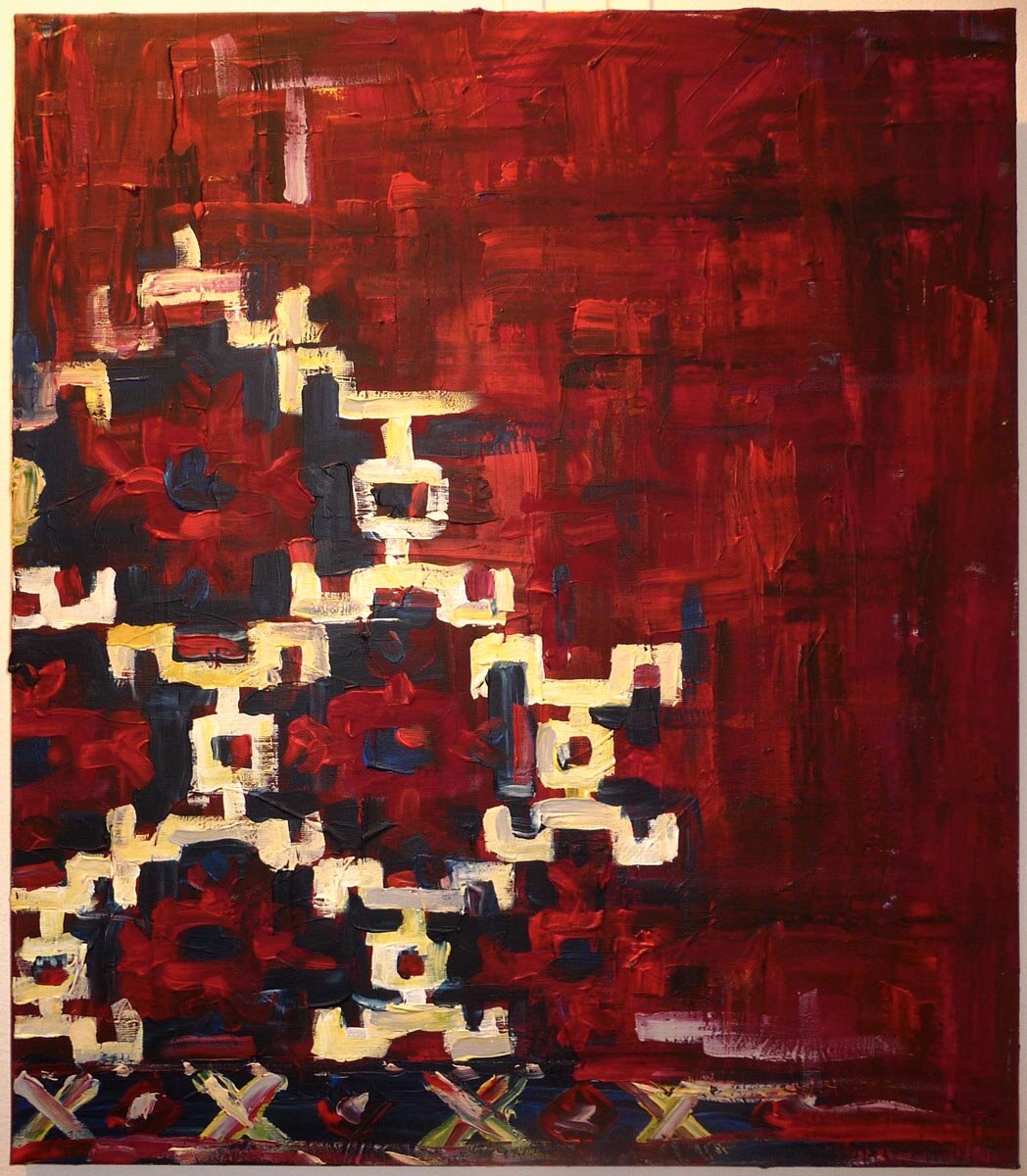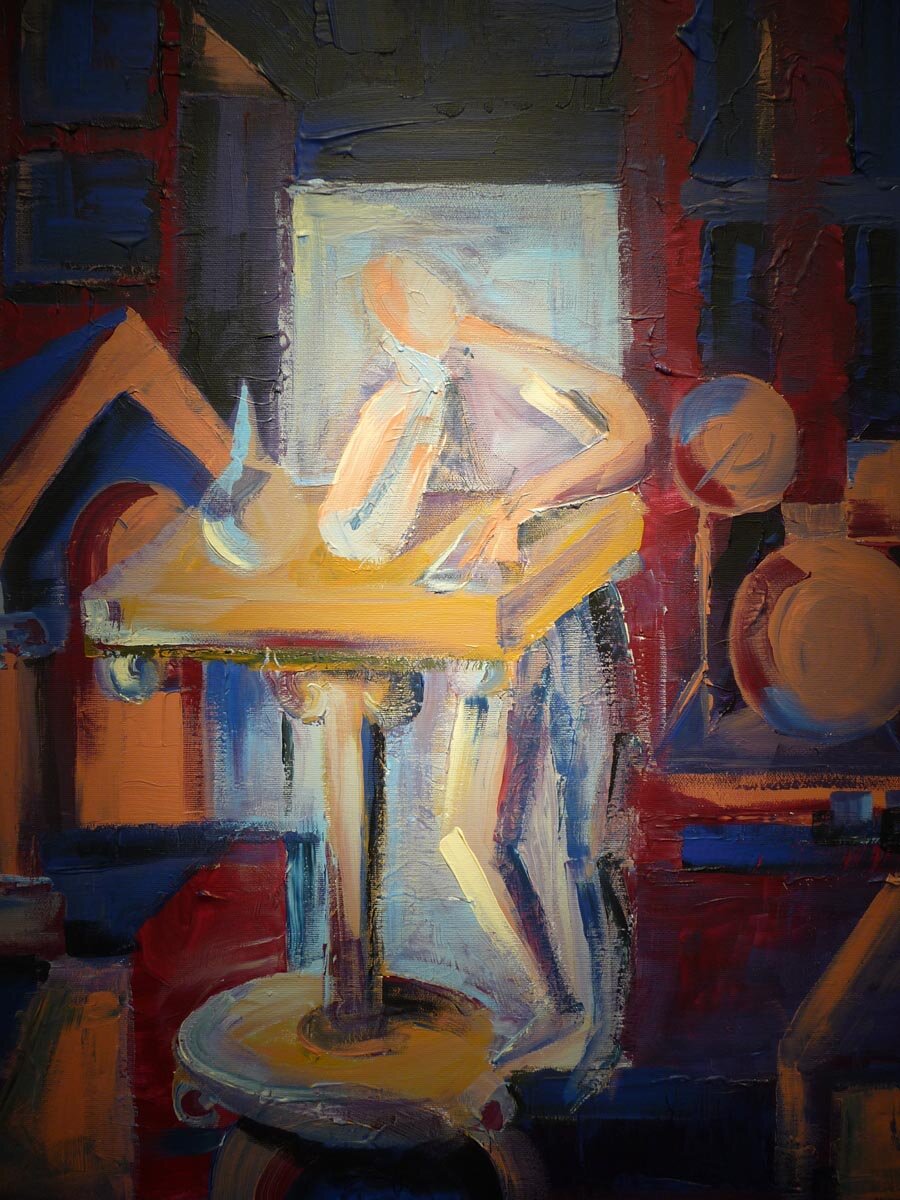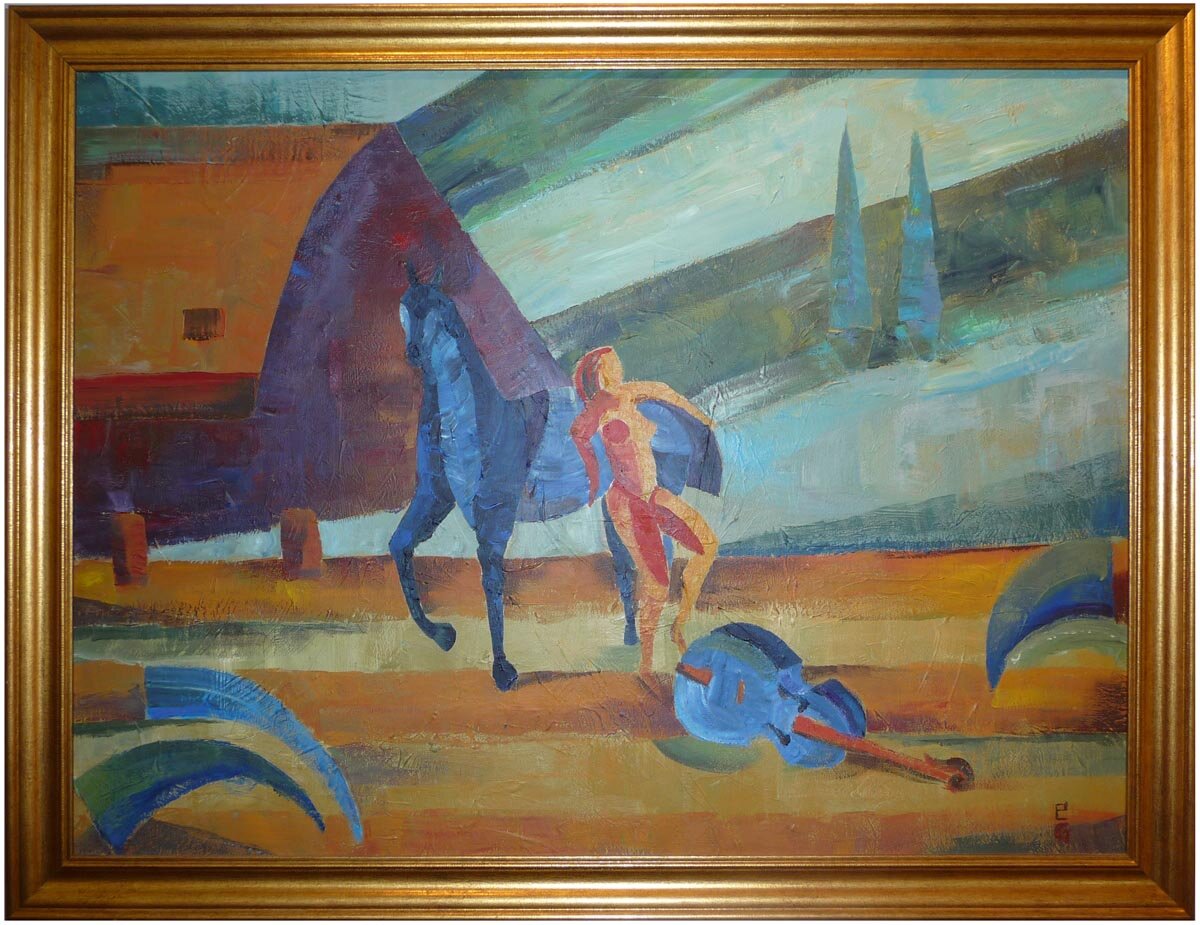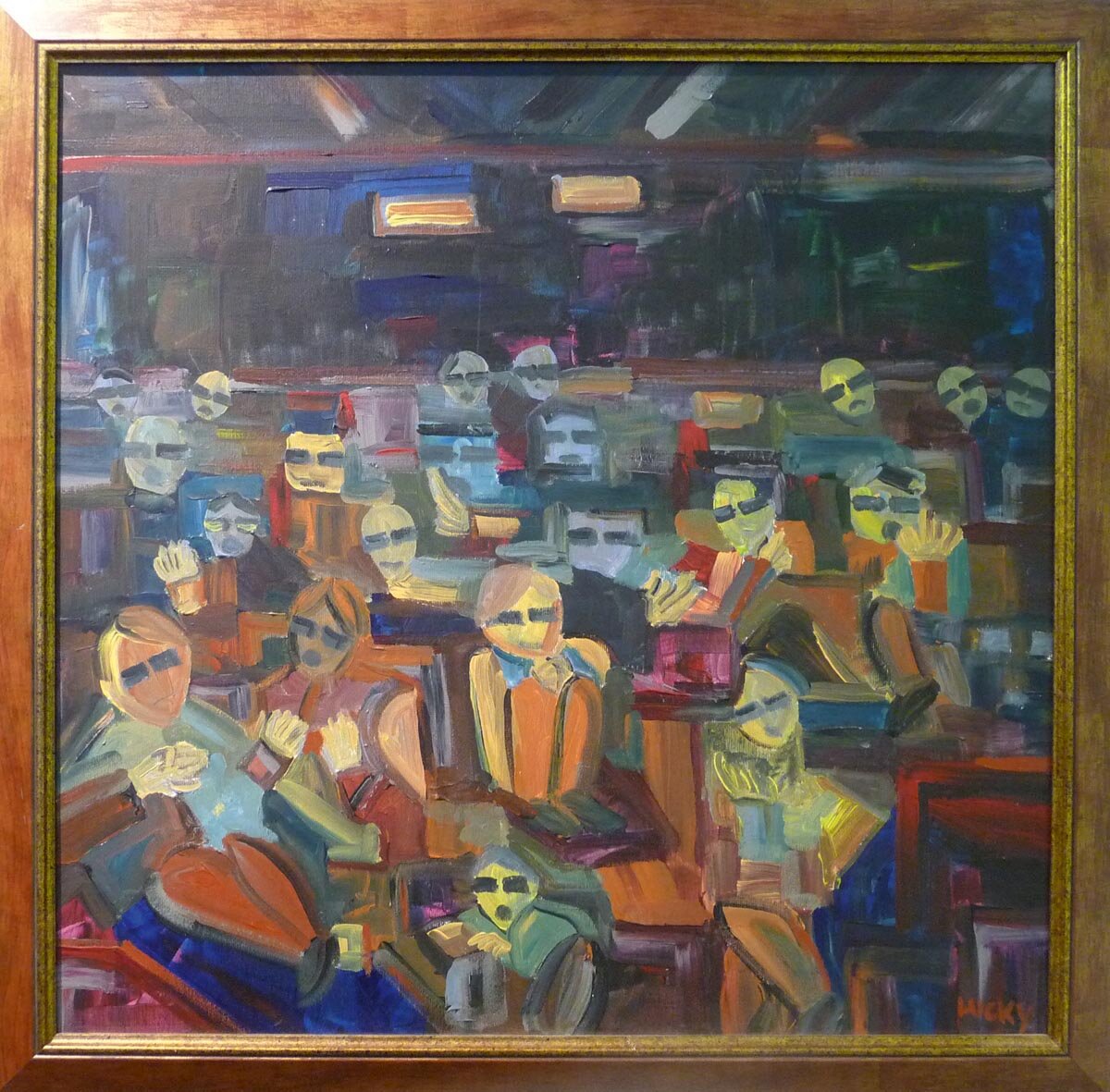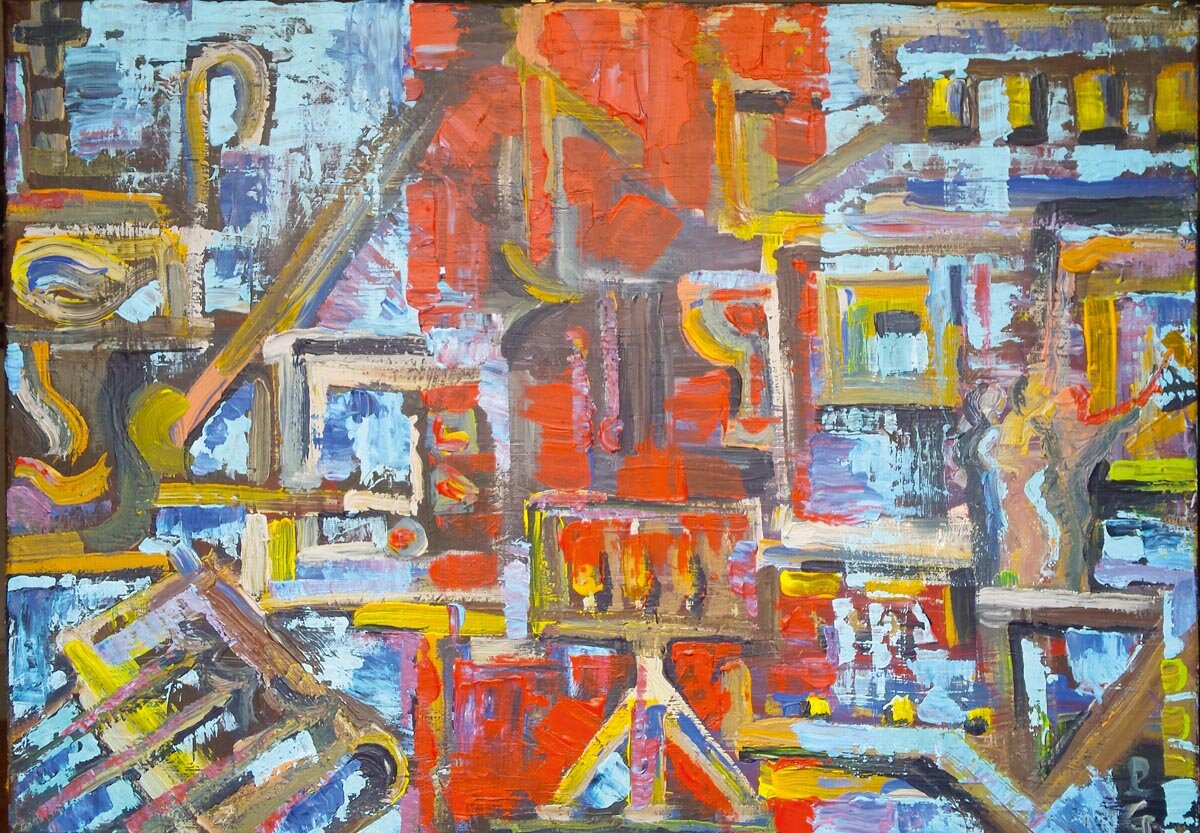Oriental carpets, painting, architecture, jazz - subtle correspondences

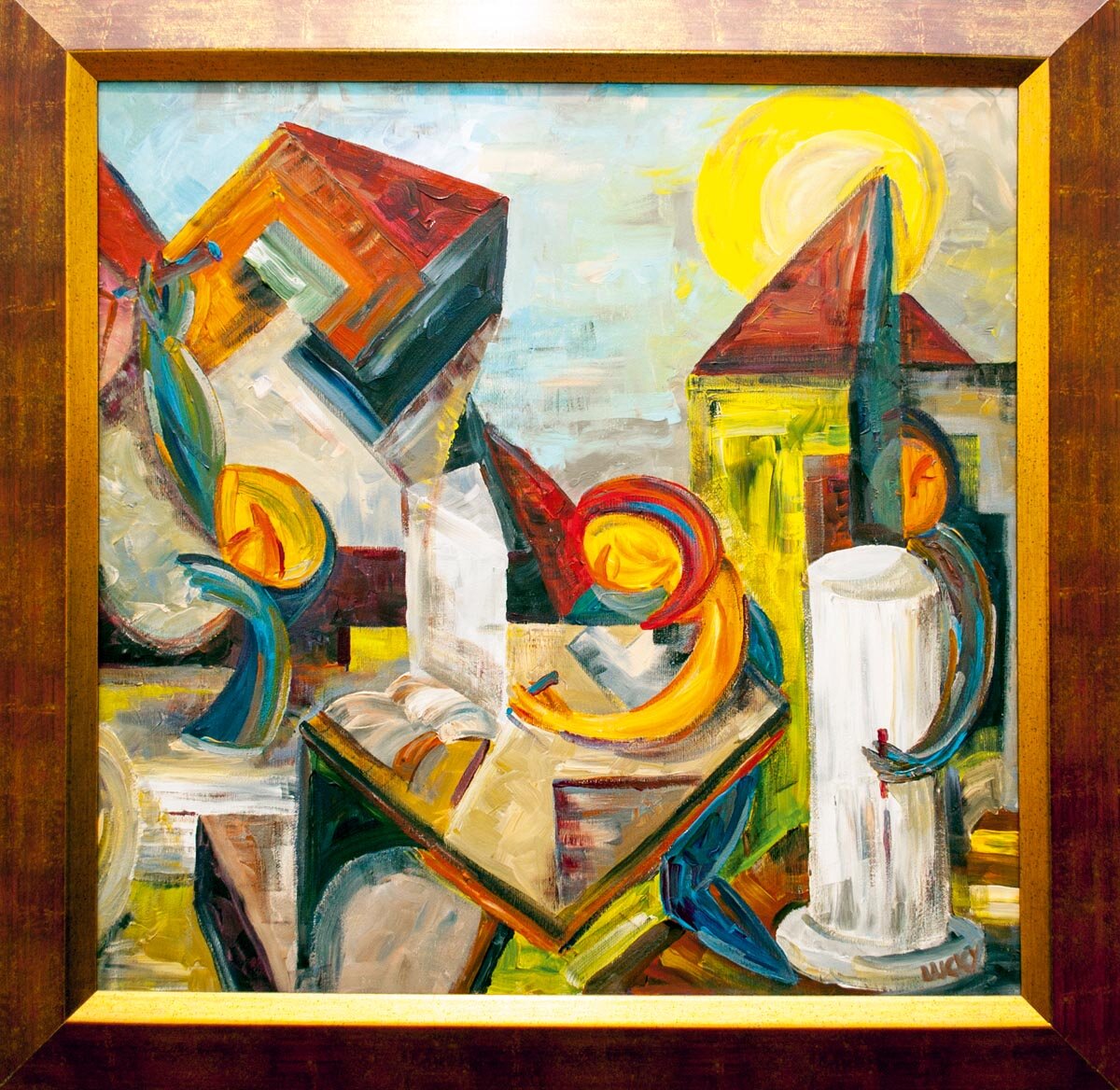
Interview with the architect Lucian George Păiș, on the exhibition "Geometry and Color", open at the Calderon Center of Architectural Culture of the UAR (February 2017)
Monica Lotreanu: In a brief descriptive presentation, the exhibition of architect Lucian George Păiș, known as an architect, painter and jazz percussionist performer, is organized in two distinct sections, perfectly placed in the exhibition space of the Calderon Center. In the first section we feast our eyes on a unique and exceptional series of acrylic canvases interpreting oriental carpets. The second is a series of compositions also in acrylic, with, I would say, at least differentiated themes and manners.
Lucian George Păiș: This is the second exhibition hosted by the Calderon Center of the Union of Architects, which is very appropriate for these events. Indeed, in the first section I exhibit a series of 7+3 new paintings, inspired by the art of classical, antique carpets, each one representing a specific geographical area and typology. I have tried to reproduce and interpret them through painting in my own way, in order to show the beauty and richness of the symbolism and chromaticism of this art. In reviewing the works, the first is a Kerman carpet with leaves, a famous 16th-17th century pattern, which sold a few years ago at auction for 33 million dollars, it is a fantastic composition with remarkable pedigree. The second is a typical Transylvanian Anatolian carpet; in the Saxon area there was a custom in the 16th century. In the 16th-17th centuries there was a custom in the Saxon area to buy Anatolian carpets for the dowries of girls from wealthy families. Such "Transylvanian" carpets can also be found in the collection of the Black Church in Brașov, one of the richest, and other Saxon churches. The next carpet reproduced is a "Lotto", also Anatolian in origin, named after a painting by Lorenzo Lotto (ed. - The Milostenias of St. Anthony, 1542); examples of this kind are on the market, but they are very rare and expensive, and the next is a chilim, that is a woven bark, not a knotted carpet (like Persian ones) - an 18th century Oltenian bark, with a very beautiful bird symbolism, which also appears in other cultures. The fifth piece is a Teke carpet from Turkmenistan, with a dark red "oxblood" background; in our country, this type of carpet was called Buhara carpet. The following are Caucasian rugs that I am very fond of, with exceptional shape and geometry, I have represented a 19th century Star Kazak rug and a Sewan Kazak rug (motif known as "keyhole"), also very rare as a piece. The series is closed by two compositions with Caucasian motifs, for example, an Aksu Torba, a rare motif of Turkmen weaving that was put on the horse instead of a saddle, and finally a painting, also a composition of the atmosphere of the traditional oriental fair, the Carpet Sellers.
M.L.: The art dealer is a theme in 17th-18th century painting, a self-referential genre of representation, showing the world behind the "beauty in art." We had an inter-war painter, Francisc Shirato, who was fond of scenes of modest market life, who has a fairly well-known painting, The Bark Merchant, which I remembered seeing this work. Like Magdalene Rădulescu's oriental bazaar scene, other juxtapositions of color and geometry. What struck me when I saw these recent works is that you pay particular attention to red, the color that dominates the canvases. In this series of paintings, each one has a different, very nuanced, strong and expressive red.
L.G.P.: Exactly. In "Lotto" it's a more orangey red, in the Anatolian carpets it's darker, in the Iranian carpets of today it's a lighter "pigeon's blood" red, in the Turkmen ones, I was saying "ox's blood" red. I have made a concentrated effort to reproduce all the shades according to the typology of oriental carpets.
Kerman, 2016, Lotto, 2016, Transylvanian, 2016,
Kilim Oltenesc, 2016, Teke, 2016, Star Kazak, 2016
M.L.: How much is there interpretation versus rendering in this absolutely special pictorial series of oriental carpets?
L.G.P.: Yes, there is also interpretation, I didn't want to go for photographic realism, but to create a feeling, a vibrant state.
M.L.: Well, the word "vibration" leads me to propose an intermezzo between the two exhibition sections, saying that architect Păiș has been a professional jazz enthusiast since his youth. Anyone who knows the architects' guild knows of their passion for jazz, and some of them, including yourself, have made jazz music. Could you remember them?
L.G.P.: The composer and pianist Marius Popp, recently departed from us, a very good friend with whom I had the honor to play, my yearmate and Holograf bass player Mugurel Vrabete; Alexandru Andrieș and Doru Stănculescu also made music professionally.
M.L.: The art critic's standard question: how do we discover music in your paintings?
L.G.P.: Out of the four fields that I have tried to approach with all my heart and utmost passion - ancient art (I was a collector), painting, architecture and music, the last one gives you a feeling that no other art gives you, the sensation experienced on a stage, broken away from everything around, is unique. I remember the Club 'A' festivals or the 1979 Club 'A' Gala Festival at the Sala Palatului; in 1974 I was invited to a jazz-rock gala at the Sala Polivalentă by Aurel Gherghel. In 1980, after coming to Bucharest at the "Ion Mincu", I formed a first jazz band with Mugurel Vrabete and Nicolas Simion, one of the very highly rated Romanian jazz musicians who managed to find their way in contemporary European jazz. When I came back from university I set up a jazz club in Cluj, at the CFR Club, where we had concerts with guests like Harry Tavitian, Eugen Gondi, Ion Baciu jr, Marius Popp and many other names. Those were interesting times, there were good musicians, quality music was being made. Then I played in the Triptic Group, as a percussionist, at the end of the 80s, I continued after 1990 in parallel with architectural design and collecting pieces of old art; in 1992 I played a memorable concert with Marius Popp, Ștefan Berindei, Alin Constanțiu, Johnny Bota, presented by Florian Lungu, at the Bucharest Jazz Festival, which is recorded and which I watched at the opening of the exhibition. In the meantime I opened an art gallery, I organized several concerts, maybe the music was diluted a bit, but it remained as a vital permanence.
I remember Professor Ascanio Damian telling us in the studio, when he was looking at a project: "Pay attention to the ratio between full-full, how you balance the elements, it's all about composition". That's why in the Composer I presented a triptych: architecture on the left, music on the right, and in the middle the man who connects them. The elements of composition are also persistent in the subconscious, through training, culture, education. With some works, automatically the thought leads me to balance in both form and color placement.
M.L.: We have also referred in the preceding conversation to postmodernism in literature, film, painting, architecture, the leaning towards historical and critical references, the use of quotation: I am looking now at your work. The contrabassist in the harbor, I am struck by the obvious closeness to German expressionism, especially Franz Marc's Der Blaue Reiter, which also gives the title to the short art movement in Munich. What is the story behind the painting?
L.G.P.: I did a first sketch of a nude of a woman leaning on a horse and I thought that the paged whole seemed too small in relation to the surface of the canvas, so I completed the composition with a bass in the foreground, a more abstract background of a harbor with sailing ships... it's a painting I'm very fond of. I agree that you have to let the viewer interpret, but it's important for the artist to mark by signature and title what he wanted to express; that's why I sign and title all my works. Next to Contrabasista... is Cinema 3D, where I painted a movie theater where the spectators are seen from the screen and I capture their reactions - frights, strong emotions.
M.L.: Yes, a kind of allusion to the "scandalous" characters of Emil Nolde or James Ensor, or to sequences from German films created by Fritz de Lang - "masks", caricatured faces. Again a reference to expressionism... The character at the bottom of the painting, for example...
L.G.P.:...yes, he resembles the one in Edvard Munch's Scream... there are elements that come involuntarily into the painting.
M.L.: In other works in the exhibition, the framework of the painting strongly shines forward, it's the very first layer of perception, this betrays the painter's training as an architect and the exercise, the ease of conceptualizing and the structure with geometry.
L.G.P.: I have works that are stylistically different, but studying the history of painting fanatically, I found that absolutely everyone has had periods and periods of searching, of creation. I have a great attraction to geometry and abstraction, maybe I will continue to work in this way, but I won't limit myself to that.
The Trumpetist and Jazz II are, like The Thinker, part of the same period of activity. The last work is that with characters seen in perspective at a vanishing point on the horizon...
M.L.: Isocephalic perspective, very interesting image... Incidentally, I have seen that the theme of human groups, seen statically or dynamically in a spatial context, is a recurrent theme in the work of the last few years.
L.G.P.: I have a work, Lights and Shadows, donated to the Order of Architects and exhibited at the Mincu House, also with a series of characters passing through light and shadow, it's very interesting and metaphorical.
M.L.: So, we remain waiting for more surprising ways of painting by the architect and musician in a future exhibition. Thank you very much!
